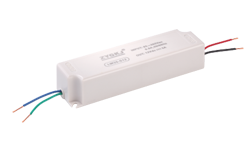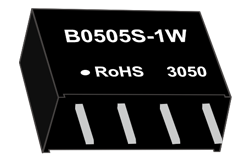news
Designing an Industrial AC-DC Converter
Author: ZYG Power Module Time: 2023-5-7
Introduction
An AC-DC converter is an essential component in industrial power systems. It is used to convert the alternating current (AC) power from the grid into the direct current (DC) power that is required by various industrial devices. The design of an AC-DC converter is critical because it affects the efficiency, reliability, and performance of the entire power system. In this article, we will discuss the key factors to consider when designing an industrial AC-DC converter.
Input Circuit
The input circuit of an AC-DC converter is responsible for rectifying the AC power from the grid into DC power. The most common type of input circuit is the full-wave rectifier, which consists of four diodes arranged in a bridge configuration. When the AC voltage is positive, two diodes conduct current, and when the AC voltage is negative, the other two diodes conduct current. This results in a DC voltage that is the average of the AC voltage.
Filter Circuit
The filter circuit of an AC-DC converter is responsible for smoothing out the pulsed DC voltage from the input circuit. The simplest type of filter circuit is the capacitor filter, which consists of a capacitor connected in parallel with the load. The capacitor stores charge during the on-time of the rectifier and releases it during the off-time, resulting in a smoother DC voltage. The size of the capacitor depends on the load current and the ripple voltage allowed.

Output Circuit
The output circuit of an AC-DC converter is responsible for regulating the DC voltage to the desired level. The most common type of output circuit is the voltage regulator, which maintains a constant output voltage despite changes in the input voltage or load current. There are two types of voltage regulators: linear and switching. Linear voltage regulators are simple and reliable but are inefficient and generate a lot of heat. Switching voltage regulators are more complex but are highly efficient and generate less heat.
Protection Circuit
The protection circuit of an AC-DC converter is responsible for protecting the converter and the load from overvoltage, overcurrent, and overheating. The most common type of protection circuit is the fuse, which cuts off the current flow when the current exceeds a certain limit. Other types of protection circuits include overvoltage protection devices, overcurrent protection devices, and thermal protection devices.
Conclusion
Designing an industrial AC-DC converter requires careful consideration of the input circuit, filter circuit, output circuit, and protection circuit. The choice of components and their specifications affect the efficiency, reliability, and performance of the converter. A well-designed AC-DC converter can provide stable and reliable power to industrial devices, which is critical for the smooth operation of industrial processes.
Previous: AC-DC Power Supply: The Ultimate Solution for Reliable Energy Conversion
Next: AC-DC Power Supply: The Ultimate Solution for Reliable and Efficient Power Conversion
relevant information
-
2023-12-9
Top-Rated Fully Modular Power Supply: Unleashing the Best in Efficiency and Customization
In the ever-evolving world of technology, efficiency and customization are two key factors that drive the demand for top-quality power supplies. A power supply is the heart and soul of any electronic device, providing the necessary power for it to function effectively. But what sets a top-rated fully modular power supply apart from the rest? Let's explore the features that make it a superior choice for professionals and enthusiasts alike. First and foremost, a fully modular power supply offers a level of flexibility and convenience that is unparalleled. Unlike semi-modular or non-modular power supplies, which come with a fixed set of cables, a fully modular power supply allows users to connect only the cables they need. This not only reduces...
View details -
2023-5-7
Designing an AC-DC Converter Circuit
AC-DC converter circuits are essential components in many electronic devices such as power supplies and battery chargers. These circuits allow the conversion of AC power from the electrical grid to DC power that can be used to power electronic devices. In this article, we will discuss the design of an AC-DC converter circuit. The first step in designing an AC-DC converter circuit is to determine the input voltage and the desired output voltage. Once these values are known, the next step is to choose the appropriate transformer and rectifier components. The transformer is used to step down the input voltage to a level that is suitable for the rectifier circuit. The rectifier circuit is responsible for converting the AC voltage...
View details -
2023-10-29
Module Power Supply: Providing Efficient and Reliable Energy Solutions
Introduction The demand for energy is constantly rising. From powering our homes and businesses to fueling our transportation systems, energy is an essential component of modern life. However, the traditional methods of energy generation are often inefficient and unsustainable. To address this challenge, module power supply systems have emerged as a viable solution, offering efficient and reliable energy solutions. This article will explore the benefits and applications of module power supply systems, highlighting their importance in meeting the growing energy demands of the future. Efficiency and Reliability One of the primary advantages of module power supply systems is their high efficiency. Unlike traditional energy generation methods, such as coal-fired power plants or gasoline-powered generators, module power supply systems can convert...
View details -
2023-6-8
12V 15A AC to DC Converter: Efficient Power Conversion for Your Devices
In today's world, we rely heavily on electronic devices to make our lives easier and more convenient. However, most of these devices require direct current (DC) to function, while the power supply in our homes and offices provides alternating current (AC). This is where an AC to DC converter comes in. An AC to DC converter is a device that converts AC power to DC power, allowing you to power your electronic devices that require DC power. The 12V 15A AC to DC Converter is one such device that is gaining popularity due to its efficiency and versatility. The 12V 15A AC to DC Converter is a power supply that can convert 100-240V AC input to 12V DC output. With...
View details -
2022-10-17
How to buy DC-DC Converter and what it does
When looking for a DC-DC converter, it's important to consider your needs and choose the right converter for the job. There are a wide variety of converters on the market, so it's important to do your research and find the one that best meets your requirements. What is a DC-DC converter? A DC-DC converter (direct current to direct current converter) is an electronic converter that converts a direct current (DC) input to a direct current output. DC-DC converters are often used to convert the voltage from the battery to a level suitable for powering electronic devices. DC-DC converters are also used in power supplies to convert an AC input voltage to a DC output voltage. What are the...
View details -
2023-5-17
How to Choose the Right AC-DC Power Supply for Your Needs
When it comes to choosing the right AC-DC power supply for your needs, there are a few important factors to consider to ensure that you select the best option for your specific application. From voltage and current requirements to form factor and efficiency ratings, there are several key considerations that can help guide your decision-making process. In this guide, we'll explore some of the most important factors to keep in mind when choosing an AC-DC power supply. Voltage and Current Requirements One of the most important considerations when choosing an AC-DC power supply is determining the voltage and current requirements for your application. It's crucial to ensure that the power supply you choose is capable of delivering the voltage and...
View details


















